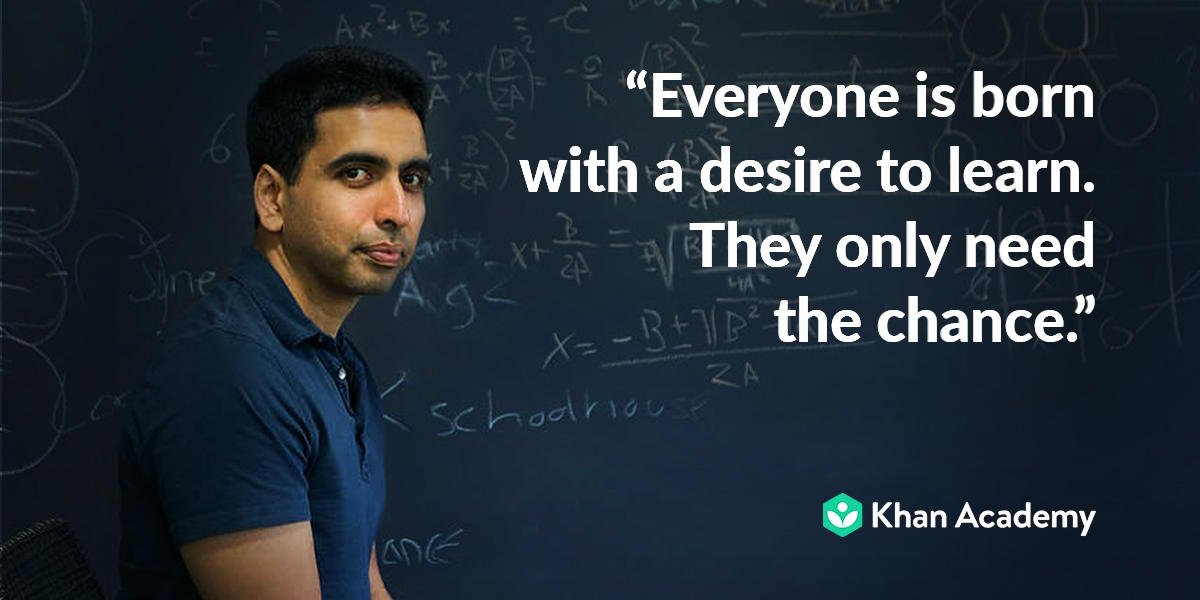

Sundar Subbarayan, Khan Academy’s Implementation Lead, knows why this new teaching style is so successful. Khan Academy also built personalized “dashboards” for the teachers’ laptops to monitor each student’s progress. Students were given laptops and allowed to work at their own pace via personalized “Knowledge Maps” and videos. In 2010, the Superintendent of California’s Los Altos School District heard about Khan Academy, and decided to pilot the program in five classrooms in the district. Anyone with a computer and a Facebook or Google account can log onto the Khan website to take advantage of Khan’s vast library.Īfter that, it was a straight shot to success. Today, over 2.5 million unique users have visited Khan Academy, which has expanded to include videos about Science, Economics, Finance, and History. In 2009, Khan quit his job and began working full-time on educational videos and accompanying materials with the mission of “…changing education for the better by providing a free world-class education to anyone, anywhere.” Within a year, his efforts garnered attention and funding from prominent sources like Ann Doerr, Bill Gates, and Google. Within weeks, his YouTube videos became a sensation, attracting hits from all over the world.

From then on, her math performance improved, and he began making videos of lessons to share with family members and friends. Khan, a former hedge fund analyst with degrees from MIT and Harvard, picked up the telephone and used Yahoo Doodle to work through the math problems with his niece. He was eager to help, but needed a creative solution to bridge the 1000 miles that separated them. Khan Academy’s vision began in 2004, when founder Salman Khan’s cousin called and asked him for math tutoring. Reconstructing the classroom lets students drive the pace and content of their learning, having teachers stand by as coaches and experts.

By providing an online library of math videos and assessments for students to use, they have created a self-driven, individualized curriculum that motivates students with immediate feedback and positive rewards. One organization that has found a way to improve education through technology is the Khan Academy.

And it leaves further and further behind those who need extra help to keep up,” writes Murdoch. The top-down, one-size-fits-all approach frustrates the ones who could do more advanced work. “The minute they step back into their classrooms, it's like going back in time. “The Steve Jobs Model for Education Reform” by Rupert Murdoch argues that educators must harness technology to spark students’ imaginations.


 0 kommentar(er)
0 kommentar(er)
